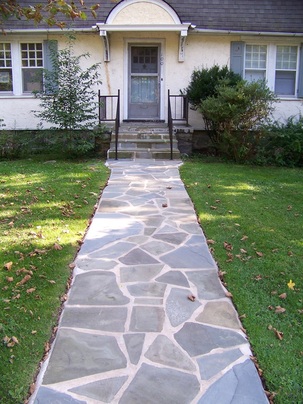But first, a little background. I set out to write a single post helping clients through the decision making process. But as I started typing, I realized that there was just too much information. The more I wrote, the more decisions that needed to be made presented themselves. It’s like those “Choose your Own Adventure” books for young readers, where you have to choose between trusting the evil Magician or not. Once you make a choice, then you are presented with a series of new information forcing you to make another choice – should I follow the wizard into the cave or not? If so, then do I trust him enough to lift the forbidden stone. On and on the decisions go – kind of like life, actually.
True to form, I’m rambling. Anyway, there was just too much information for a single post, so for the next few weeks I’ll be focusing on some of the specific choices that need to be made in conjunction with your hardscaping plans. I’ll wrap up the series with a handy bullet-list formatted post highlighting the basics.
Anyway, this week I’d like to focus on what could be a simple choice when it comes to flagstone. A linear design vs. random irregular shapes.

Quite simple actually. A linear design is a pattern of squares and rectangles, all cut to specific dimensions that fit together nicely with consistent joint widths. The size of the stones may vary based on the scale of the space, but typically dimensions run in 6” increments, with 12x12 being the smallest size, and usually up to 36” pieces being the largest dimensions, but sometimes smaller on narrow pathways or small patio spaces. Since the stones are pre-cut to exact specifications, this allows for a nice consistent joint width between stones, typically measuring approximately ½” to ¾”wide. The stones may be set in a pre-determined pattern, or in a randomly occurring sequence with all the individual pieces fitting together nicely.

From a cost perspective, the two options are about the same in terms of installation price. The pre-cut linear dimensional stones are usually more expensive from the supplier, but the labor is more straight-forward. The irregular shaped pieces are sold at a discounted bulk rate from the supplier, but more labor intensive on the installation end. So any price differences usually come out in the wash.
So what’s right for your project?
Well this is where your decision making process comes in. The linear design usually offers a cleaner, more formal look (but not always), and lends itself to formal or more modern designs. The irregular option is slightly more organic, and lends itself more to informal spaces or garden walkways and landings.
But there’s really no right or wrong application. It’s just what you prefer.
Our series on hardscaping options will continue next week, as we discuss the difference between a wet-set flagstone option and a dry-set installation.




 RSS Feed
RSS Feed